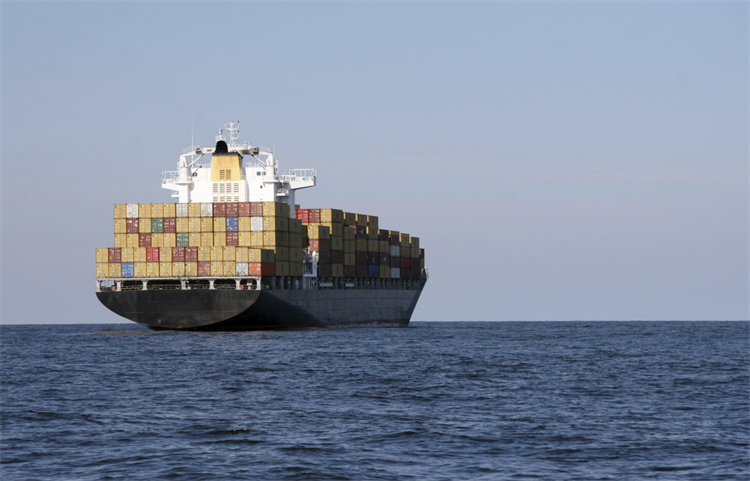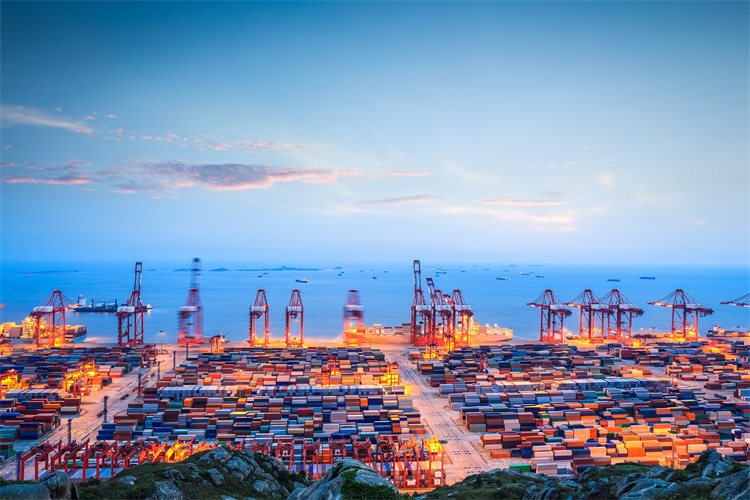Key Determinants of Ocean Freight Costs Explained

Ocean freight plays a vital role in global trade, moving nearly 90% of international commodities. However, freight costs have surged dramatically in recent years. For instance, shipping a 40-foot container on major eastern routes has increased by 360% compared to last year. Factors like container shortages, port congestion, and fluctuating fuel prices drive these changes. Understanding how to calculate ocean freight charges and these cost drivers helps you make informed decisions and manage expenses effectively. By analyzing elements such as seasonality, trade routes, and fuel costs, you can uncover strategies to optimize your shipping budget and streamline logistics.
Key Takeaways
Understand the impact of seasonality on freight rates; plan shipments during off-peak periods to save costs.
Monitor fuel prices and negotiate surcharges with carriers to manage shipping expenses effectively .
Address container shortages by booking shipments early and collaborating with logistics providers for better access to equipment.
Diversify shipping routes to avoid port congestion and reduce delays, ultimately lowering additional costs.
Stay informed about geopolitical events that may disrupt shipping schedules and adjust plans proactively.
Familiarize yourself with common surcharges and request detailed breakdowns from carriers to anticipate total shipping costs.
Utilize tools like JUSDA’s JusLink platform for real-time insights and strategic planning to optimize your logistics budget.
Seasonality and Its Impact on Ocean Freight Rates

Seasonality plays a significant role in shaping ocean freight rates. Understanding how seasonal trends influence shipping costs can help you plan better and save money.
Peak Shipping Seasons and Demand Surges
Peak shipping seasons often lead to higher freight rates. During these periods, demand for ocean freight services increases significantly.
Port congestion also becomes a common issue during peak seasons. With more vessels arriving at ports, delays occur, and shipping companies may impose additional fees to offset the increased operational challenges. These factors make peak seasons one of the most expensive times to ship goods.
To navigate these challenges, you should plan shipments well in advance. Booking early can secure container space at more reasonable rates. Additionally, consider collaborating with logistics providers who can offer strategic solutions to manage peak season demands effectively.
Off-Peak Periods and Cost-Saving Opportunities
Off-peak periods present opportunities to reduce shipping costs. During these times, demand for ocean freight services decreases, leading to lower freight rates. For instance, the months following major holidays or the lull between seasonal product launches often see reduced shipping activity.
Shipping during off-peak periods not only saves money but also minimizes the risk of delays caused by port congestion. With fewer vessels at ports, operations run more smoothly, ensuring faster transit times. This period is ideal for businesses looking to optimize their logistics budgets.
To take advantage of off-peak savings, you should analyze your shipping schedules and identify flexible timelines. Adjusting shipment dates to align with off-peak periods can result in significant cost reductions. Partnering with a reliable supply chain provider can further enhance your ability to capitalize on these opportunities.
"Peak seasons drive up freight rates due to high demand, while off-peak periods offer cost-saving opportunities through reduced competition and smoother operations."
By understanding how seasonality impacts ocean freight rates, you can make informed decisions and optimize your shipping strategies. Recognizing these patterns allows you to balance costs and efficiency effectively.
Fuel Prices and Their Role in Ocean Freight Costs
fuel prices play a critical role in determining ocean freight rates.
How Fluctuations in Fuel Prices Affect Ocean Freight Rates
fuel price fluctuations directly influence freight rates.
The impact of fuel prices extends beyond surcharges. Rising oil prices can also affect the availability of bunker fuel, which powers most cargo ships. Limited bunker capacity can lead to increased competition among carriers, further driving up sea freight rates. Monitoring global oil price trends can help you anticipate changes in shipping costs and plan accordingly.
To mitigate the effects of fuel price fluctuations, consider negotiating fuel surcharges with carriers. Many companies offer flexible terms, allowing you to secure more predictable freight rates. Additionally, optimizing shipping routes and consolidating shipments can reduce fuel consumption, helping you save on transportation costs.
Environmental Regulations and Their Cost Implications
Environmental regulations also influence ocean freight rates by affecting fuel-related expenses. Governments and international organizations have implemented stricter rules to reduce emissions from shipping vessels. For instance, the International Maritime Organization (IMO) introduced the IMO 2020 regulation, which limits sulfur content in marine fuels. Compliance with such regulations often requires carriers to use cleaner, more expensive fuels or invest in emission-reducing technologies.
These changes increase operational costs for shipping companies, which are then reflected in freight rates. For example, carriers may charge higher fees to offset the cost of low-sulfur fuel or the installation of scrubbers. These additional expenses can significantly impact the cost of shipping goods to your intended destination.
To navigate these challenges, you can explore partnerships with carriers that prioritize fuel efficiency and sustainability. Many companies have adopted innovative technologies to reduce fuel consumption and comply with environmental standards. By choosing such partners, you can minimize the impact of regulatory costs on your shipping budget.
"Fuel price fluctuations and environmental regulations are key drivers of ocean freight rates. Understanding these factors helps you make informed decisions and optimize your logistics strategy."
By staying informed about fuel price trends and regulatory changes, you can better manage your shipping costs. Proactive planning and strategic partnerships enable you to adapt to market conditions and maintain cost-effective operations.
Container Capacity and Equipment Availability in Ocean Freight

The Impact of Container Shortages on Ocean Freight Rates
Container shortages have become a pressing issue in the shipping industry, significantly influencing ocean freight rates.
Limited vessel capacity overseas further exacerbates this problem. Shippers often turn to the spot market to secure space, where rates are typically higher. This shift increases competition and pushes prices to unprecedented levels. The shortage of containers also forces businesses to delay shipments, leading to missed deadlines and additional expenses.
To mitigate the impact of container shortages, you can adopt proactive strategies.
"Container shortages disrupt supply chains and drive up freight rates. Early planning and strategic partnerships can help you navigate these challenges effectively."
By understanding the dynamics of container availability, you can make informed decisions to minimize disruptions and control shipping expenses.
Port Congestion and Its Effect on Shipping Costs
Port congestion is another critical factor that affects ocean freight rates. When ports experience high traffic volumes, delays become inevitable. Ships waiting to unload cargo create bottlenecks, slowing down operations and increasing costs. During peak seasons or global events, congestion levels rise dramatically, further straining the supply chain.
For instance, the pandemic highlighted the vulnerabilities of port infrastructure. Jampacked container ships stuck in traffic caused significant delays, disrupting the flow of goods worldwide. These delays often result in additional charges, such as demurrage fees, which shipping companies pass on to customers. The combination of labor shortages, equipment scarcity, and logistical challenges amplifies the financial burden on businesses.
To address port congestion, you should consider diversifying your shipping routes. Using less congested ports can reduce delays and associated costs. Partnering with supply chain providers who offer real-time tracking tools can also enhance visibility, allowing you to adjust plans as needed. Efficient planning and flexibility are key to minimizing the impact of port congestion on your operations.
"Port congestion increases shipping costs through delays and surcharges. Diversifying routes and leveraging technology can help you stay ahead of these challenges."
By staying informed about port conditions and adopting adaptive strategies, you can maintain smoother operations and manage freight costs more effectively.
Trade Routes and Geopolitical Factors That Affect Ocean Freight Rates
Trade routes and geopolitical developments significantly influence ocean freight rates.
Popular Trade Lanes and Their Influence on Pricing
Popular trade lanes play a crucial role in determining freight rates.
For example, the Asia-North America trade lane frequently sees surges in demand as businesses import goods to meet consumer needs. This demand creates pressure on shipping capacity, leading to higher rates. Similarly, the Asia-Europe route remains a critical corridor for transporting manufactured goods, further influencing pricing trends.
To manage costs on these popular trade lanes, you should explore alternative routes or shipping schedules. Diversifying your trade routes can help you avoid congestion and secure better rates. Collaborating with logistics providers who specialize in optimizing trade lane usage can also enhance your shipping efficiency.
"High-demand trade lanes like Asia-North America and Asia-Europe drive up freight rates due to competition for vessel space and strategic importance."
By analyzing trade lane dynamics, you can identify cost-effective options and improve your supply chain resilience.
Geopolitical Events and Their Disruption of Ocean Freight Costs
Geopolitical events create significant disruptions in the container shipping industry, often leading to unpredictable freight rate fluctuations. Political instability, conflicts, and regulatory changes can all impact shipping operations. For instance, tensions in the Red Sea and Gulf of Aden have caused longer transit times and increased costs for vessels navigating these regions.
The situation in the Panama Canal also highlights how geopolitical factors affect freight rates. Water shortages and operational challenges have led to delays, forcing carriers to reroute shipments or impose additional charges. These disruptions strain the global supply chain and contribute to rising shipping expenses.
Broader geopolitical tensions, such as potential U.S. tariffs on Chinese goods, further complicate the landscape. These measures can alter trade patterns, prompting businesses to diversify suppliers and adjust shipping routes. While this diversification helps mitigate risks, it often results in higher costs due to longer transit distances or less efficient routes.
To navigate these challenges, you should monitor geopolitical developments closely. Staying informed about potential disruptions allows you to plan shipments proactively and avoid affected regions. Partnering with logistics providers who offer real-time tracking and risk assessment tools can also help you adapt to changing conditions.
"Geopolitical events like Red Sea tensions and Panama Canal challenges disrupt shipping schedules and increase freight costs. Proactive planning and monitoring can help you mitigate these risks."
By understanding the impact of geopolitical factors, you can develop strategies to minimize disruptions and maintain cost-effective operations.
Additional Charges and Surcharges in Ocean Freight
Ocean freight shipping involves more than just the base rate. Various additional charges and surcharges can significantly impact your shipping costs. Understanding these fees helps you plan better and avoid unexpected expenses.
Common Surcharges and Their Impact on Costs
Surcharges are extra fees added to the base shipping rate to cover specific operational or variable expenses. These charges often have a decisive influence on the total shipping costs. Some of the most common surcharges include:
Fuel Surcharges: These fees account for fluctuations in fuel prices. Carriers adjust them based on market conditions, ensuring they recover the rising costs of fuel.
Terminal Handling Charges (THC): These fees cover the cost of loading and unloading containers at ports. They vary depending on the port and its operational efficiency.
Documentation Fees: These charges apply to the preparation and processing of shipping documents, such as bills of lading and customs paperwork.
Carbon Taxes: With increasing environmental regulations, some carriers impose carbon taxes to offset emissions from shipping operations.
Each of these surcharges adds to the overall shipping costs. For example, a sudden spike in fuel prices can lead to higher fuel surcharges, directly affecting your budget. To manage these costs effectively, you should familiarize yourself with the surcharges applied by your carrier. This knowledge allows you to anticipate expenses and negotiate better terms.
Pro Tip: Always request a detailed breakdown of surcharges from your carrier. Transparency helps you identify areas where you can save money.
Unexpected Costs and Strategies to Minimize Them
Unexpected costs often arise from unforeseen circumstances, such as delays, equipment shortages, or regulatory changes. These costs can disrupt your budget and create logistical challenges. However, you can take proactive steps to minimize their impact:
Understand Shipping Options: Research different shipping methods and routes. Some options may help you avoid high-demand ports or congested trade lanes, reducing the risk of delays and extra fees.
Track Surcharges: Use tools or platforms to monitor surcharges in real time. Staying informed about changes allows you to adjust your shipping plans accordingly.
Plan Ahead: Early booking secures container space and locks in rates, helping you avoid last-minute price hikes.
Partner with Reliable Providers: Collaborate with logistics companies that offer robust networks and advanced tracking systems. These partners can help you navigate disruptions and find cost-effective solutions.
For instance, if port congestion leads to demurrage fees, diversifying your shipping routes can prevent delays and reduce additional charges. Similarly, consolidating shipments can optimize container usage, lowering your overall shipping costs.
"Unexpected costs can disrupt your budget, but strategic planning and reliable partnerships help you stay in control."
By implementing these strategies, you can mitigate the impact of unexpected costs and maintain a more predictable shipping budget. Proactive measures ensure smoother operations and better financial outcomes.
Currency Exchange Rates and Their Effect on Ocean Freight
Currency exchange rates play a pivotal role in determining ocean freight costs.
How Currency Fluctuations Influence Ocean Freight Rates
Currency fluctuations directly affect ocean freight rates. Shipping transactions often involve multiple currencies, such as the U.S. dollar, euro, or Chinese yuan. When exchange rates shift, the cost of freight services can increase or decrease unexpectedly. For example, if the currency of the country where you operate weakens against the U.S. dollar, you may face higher freight charges since most ocean freight transactions are settled in dollars.
Carriers often use a Currency Adjustment Factor (CAF) to manage these fluctuations.
"Ocean freight rates depend on the exchange rate at the time of the transaction. Monitoring currency fluctuations helps avoid surprises in shipping expenses."
Extreme foreign exchange (FX) volatility, like that seen in 2022 and 2023, has disrupted global markets. Businesses relying on ocean freight have experienced significant cost variations due to these shifts. To manage this, you should closely monitor currency trends and understand how they influence freight rates. Staying informed allows you to anticipate changes and plan your shipping budgets effectively.
Regional Variations and Strategies to Mitigate Risks
Currency fluctuations impact regions differently, depending on their economic stability and trade practices. For instance, trade routes involving countries with unstable currencies often experience higher freight rate volatility. This variability can complicate cost forecasting and strain your logistics budget.
To mitigate these risks, consider the following strategies:
Implement Hedging Practices: Use financial tools like forward contracts to lock in exchange rates for future transactions. This approach protects you from sudden currency devaluations.
Understand the CAF: Familiarize yourself with the Currency Adjustment Factor applied by your carrier. Knowing how this fee is calculated helps you anticipate additional costs.
Diversify Trade Routes: Explore alternative shipping routes that involve more stable currencies. This reduces exposure to regions with high FX volatility.
Partner with Reliable Providers: Collaborate with logistics companies offering expertise in managing multi-currency transactions. These providers can help you navigate complex currency challenges.
"Any business involved in freight forwarding needs to understand and implement the CAF to manage currency fluctuations effectively."
By adopting these strategies, you can minimize the impact of currency fluctuations on your shipping costs. Proactive planning and informed decision-making ensure smoother operations and better financial outcomes.
How JUSDA Helps Manage Ocean Freight Costs Effectively
Planning and Forecasting with JUSDA’s JusLink Intelligent Supply Chain
Effective planning and forecasting are essential for managing ocean freight costs. JUSDA’s JusLink Intelligent Supply Chain offers advanced tools to help you achieve this.
With JusLink, you can monitor container availability, fuel price fluctuations, and port congestion in real time. This visibility helps you make informed decisions and avoid costly delays. For example, if a specific trade route experiences congestion, JusLink can suggest alternative routes to ensure timely delivery. By leveraging these insights, you can plan shipments more effectively and maintain control over your logistics budget.
"JusLink empowers businesses with data-driven insights, enabling smarter decisions and cost-efficient operations."
Additionally, JusLink’s forecasting capabilities allow you to predict seasonal demand surges and adjust your shipping strategies accordingly. This proactive approach minimizes the risk of overpaying during peak seasons. Whether you need to consolidate shipments or secure container space early, JusLink provides the tools to streamline your operations and save money.
Partnering with JUSDA for Reliable and Cost-Effective Ocean Freight Solutions
Partnering with JUSDA ensures access to reliable and cost-effective ocean freight solutions. With over 155 service points worldwide and a warehouse area exceeding 2,500,000 square meters, JUSDA has built a robust global network. This extensive infrastructure allows you to navigate complex shipping challenges with ease.
JUSDA specializes in offering tailored solutions for various industries, including electronics, automotive, FMCG, and medical health. Their expertise ensures that your unique shipping needs are met efficiently. For instance, if your business requires temperature-controlled containers or specialized handling, JUSDA can provide customized services to meet these demands.
"JUSDA’s industry-specific solutions ensure seamless operations, regardless of your shipping requirements."
By collaborating with JUSDA, you gain access to their vast network of carriers and trade routes. This connectivity helps you secure competitive freight rates and avoid disruptions caused by container shortages or geopolitical events. Furthermore, JUSDA’s commitment to sustainability ensures compliance with environmental regulations, reducing the risk of unexpected surcharges.
JUSDA also prioritizes transparency and communication. Their advanced tracking systems keep you updated on shipment status, allowing you to address potential issues promptly. This level of reliability builds trust and ensures smooth operations from start to finish.

JUSDA Solutions
To provide you with professional solutions and quotations.
Ocean freight costs depend on various market, operational, and external factors. By understanding these determinants, you can take control of your shipping expenses and improve efficiency.
See Also
Understanding Current Trends in Logistics Risk Management
Maximizing Efficiency Through Supply Chain Cost Strategies
An In-Depth Look at Leading Global Logistics Firms
